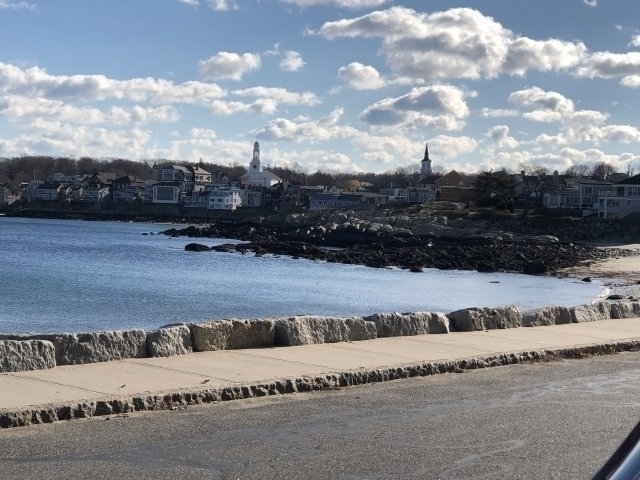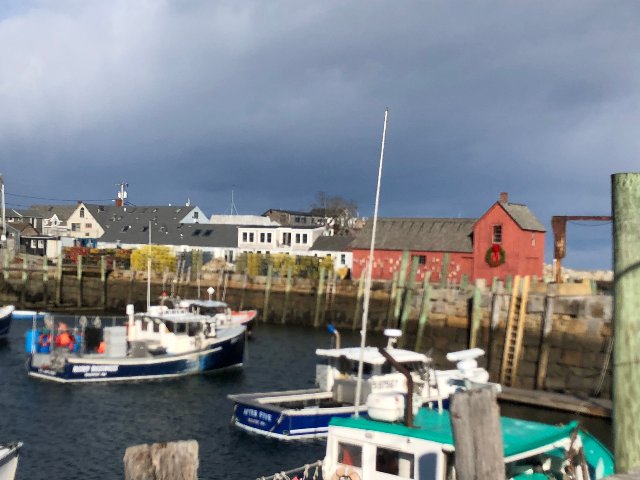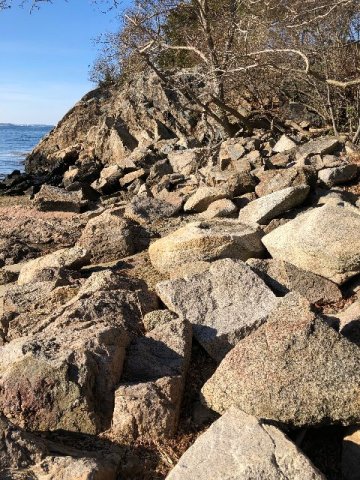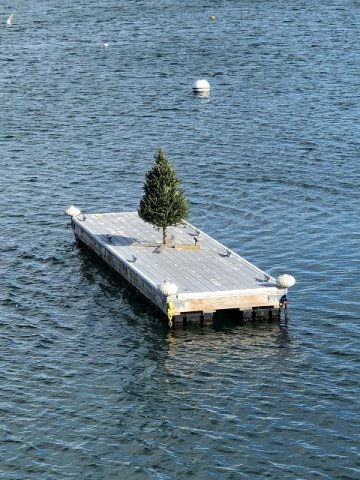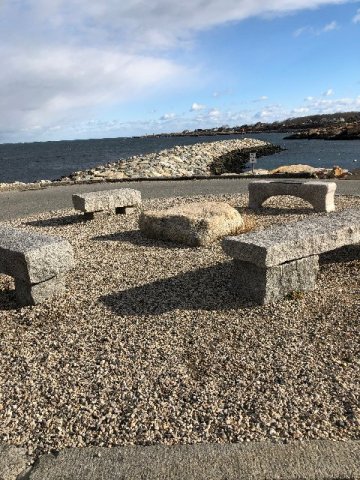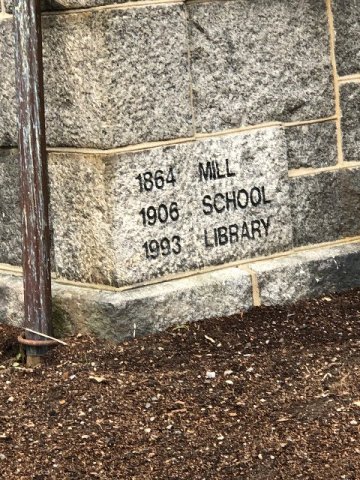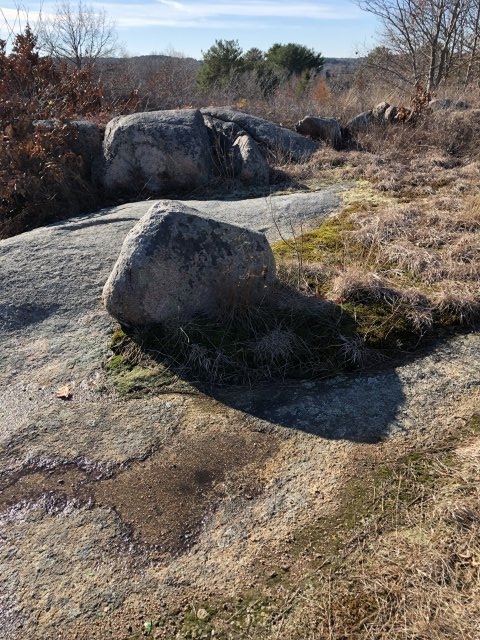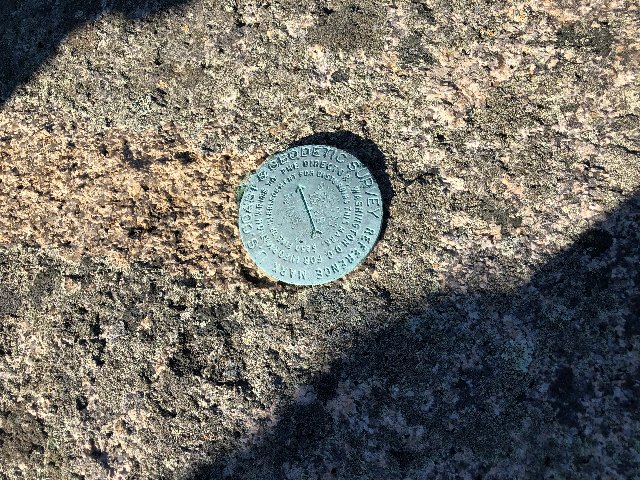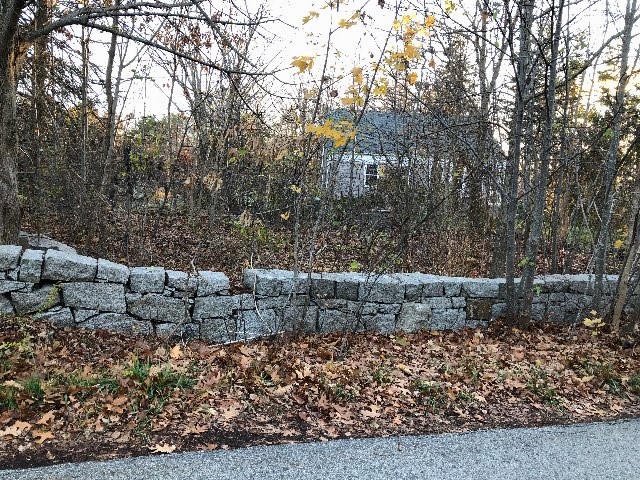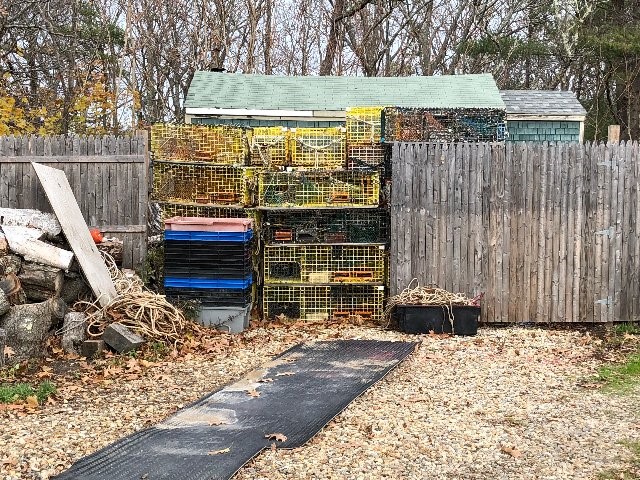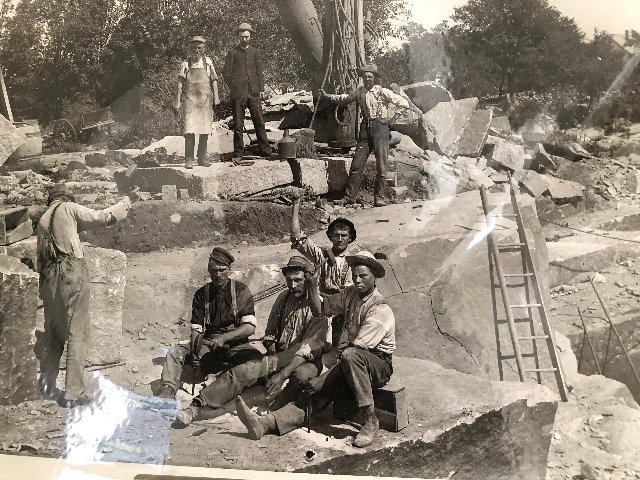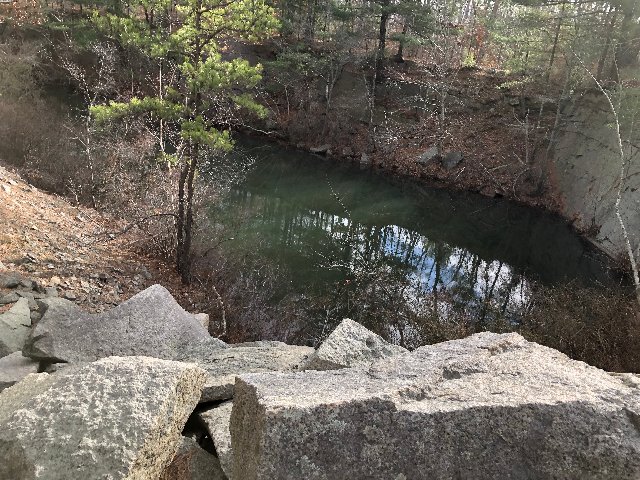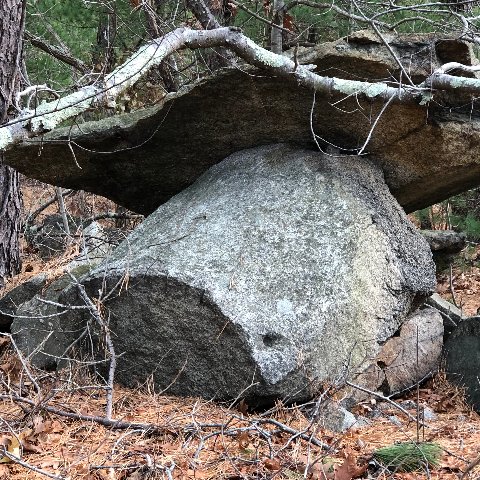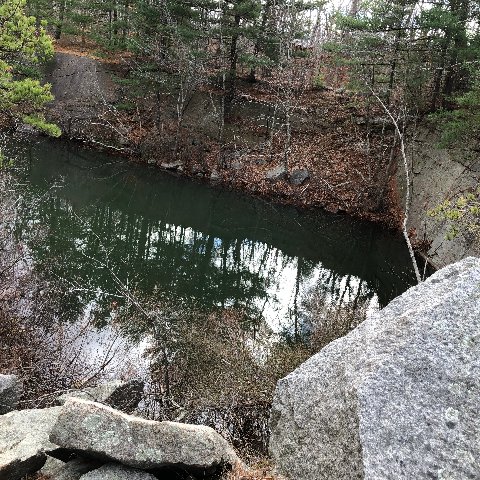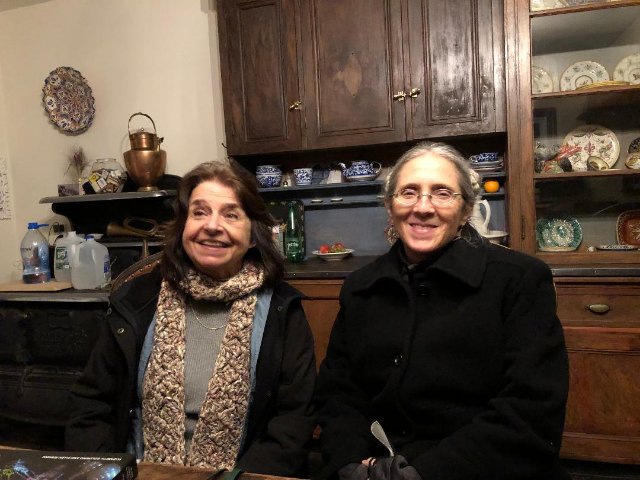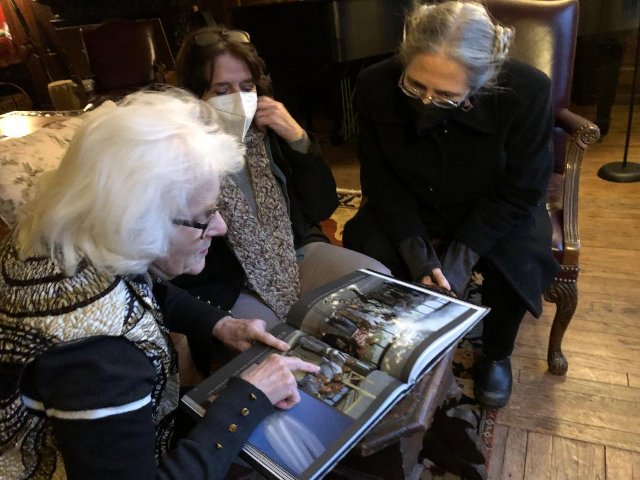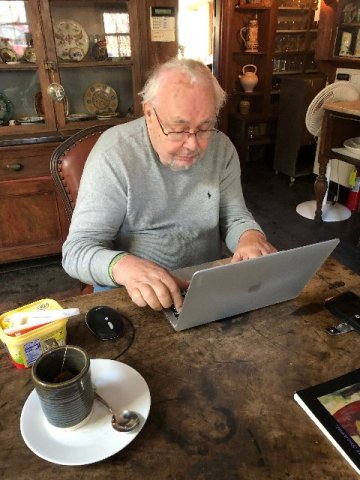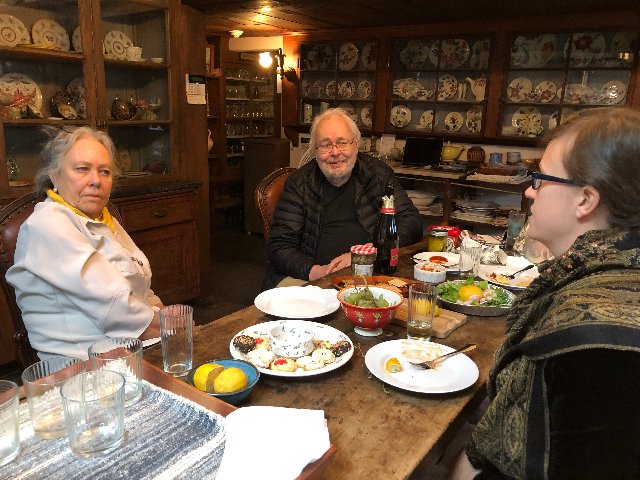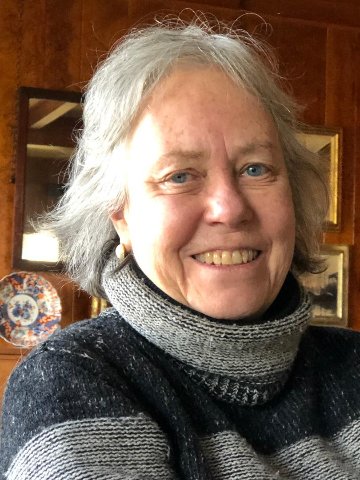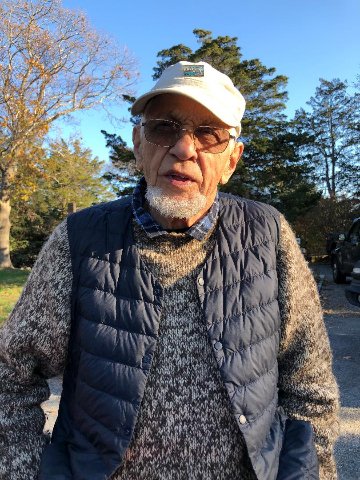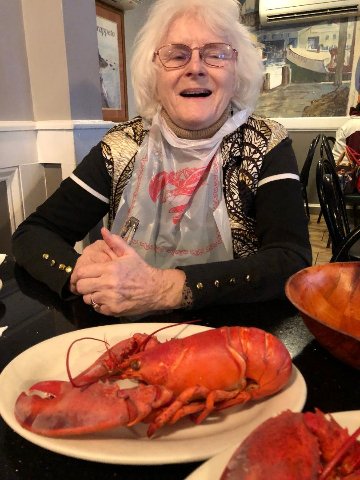Cape Ann Rocks!
Quarries, Poles Hill, Ocean Ledges
By: Astrid Hiemer - Jan 06, 2023
Quarries, Poles Hill, Ocean Ledges and gratitude weave through the following essay!
No. 1
Charles and I spent a day circumnavigating, well, driving all around the island on Rt. 127 and Rt. 127A, from Lanesville, past Folly Cove, Halibut Point State Park, Pigeon Cove, and the ocean road of Rockport. We even drove to the most visited, now desolate, shopping street in Rockport, on Bear Skin Neck, with its long break-water dam.
We visited old and investigated new neighborhoods in Rockport. And so, we came upon Ocean Ledges in Rockport, which we first thought to be another quarry. On further inspection, however, it must be very long and deep ledges, another kind of rock formation or phenomenon on this small island, where there is probably still more granite than sand or soil. We looked at a walking path below with trees, bushes, and brush so that we could not clearly photograph the ledges, through or over the fence from our higher position. We drove past the Ocean Ledges Condominiums through a Rockport neighborhood, new to us, that seemed far removed from the summer-long visitors festival.
From Rockport, at a second tip of the Cape we followed the long road (Rt. 127A) down to Gloucester. As many times before, we passed Charles’ Irish family homestead of the Nugents. Today, only the summer kitchen stands, a then separate granite stone building. A condominium community along Rt. 7A is named for Nugent Farms, one of the only public reminders of a colorful and 100-year-old family legacy. A clan that has moved out nationwide and to Canada; now, of course, also known by other last names as it is and was customary that women take their husband’s family names. (Why do women still give up their own family names?)
Then, you guessed correctly, we ended up for a late lunch at the Causeway Restaurant, in Gloucester, where there is always another seafood dish to discover. It has become Charles’ maybe our favorite food-haunt on Cape Ann!
No. 2
On the day before our last morning at Manship, Gabrielle Barzaghi and Randy Carr helped me to discover Poles Hill also known as Sunset Hill. It is a mysterious place, where Native Americans still visit to perform rituals and honor their ancestors, I’m told.
I read texts by Mary Ellen Lepionka and Dr. Mark Carlotta about solstice and equinox positions of certain stones on Poles Hill. It was in 2014 that they published their findings: “...of a central sighting stone for observing solstice sunrise and sunset events,” and “...a pink granite boulder marks the direction of summer solstice sunrise from the central sighting stone,” as written by Dr. Carlotta.
At first impression the landscape appeared to be just another plateau, where rocks had been there, in the ground, since its formation during the last Ice Age 21,000 to 24.000 years ago. We were surrounded by old moss, earth, sand, leaves, a few trees. And we found a Reference Mark of the U.S. Coast and Geodetic Survey ($ 250 fine or imprisonment for disturbing this mark), Sunset1928 R.M.3 - with such inscription. Yes, from here google earth and other satellites receive orientation!
Only a few boulders there were repositioned on the rocky plateau. Once we arrived on top, we first came upon the first impressive rock, the central sighting stone, I believe. There, far in the distance, at a straight line, the corresponding rock. It took us some time to identify the right boulder so far away, if, in fact, we identified the rocks correctly while only visiting one time. There are several entrance points to Poles Hill and a few additional tall rocks can be found on the plateau for reasons maybe still not known.
We enjoyed climbing and hiking about. Perhaps one day this place will be honored like other sites in the US or even Stonehenge, in Wiltshire, England, a pre-historic rock formation which now can only be observed from afar for fear of further damage. Charles and I were fortunate enough to walk around and inside the inner circle of Stonehenge some fifteen years ago.
Gabrielle took a 360-degree video, and texted it to me promptly. A fine document and, yet it cannot be published on BFA, so please enjoy the many photographs of the above series. Poles Hill is a spiritual site and sight for those who are open to accept it. I continued to breathe deeply and let my body and soul expand.
Well, as the senior person in the group, I had to be careful of missteps. “We want to bring you back in one piece,” Gabrielle exclaimed. We had been tracking uphill through brush and rocks for a while in order to reach the top, now downhill was made easier by borrowing Randy’s walking poles.
It is a special, even sacred place!
How could a city administration in the past attempt to build housing there? The Friends of Poles Hill and neighborhood, as well as the Commonwealth of Massachusetts, and the Essex County Greenbelt established a fund to save Poles Hill, and in 1998 every Ward and Precinct voted to protect Sunset Hill as well.
To Gabrielle and Randy: “I send you my sincere gratitude for this profound gift.”
No. 3
One morning I walked left out of the Manship estate, along Leverett Street to discover another part of the neighborhood. Across the street, a striking blue tall house in Federal style, set back and as all on the street, the property line is marked by a granite fence.
There are smaller and bigger homes, also a fisherman’s home with lobster traps out front. Then, I walked by an impressively built granite house in brown color tones with a granite shed on the opposite side of this property. Several stairs lead to a stately entrance.
Almost at the end of Leverett Street I came upon the sign to a Greenbelt Property, the Gabriel and Selma Kleimola Reservation. When I walked into the forest, quickly to the left I marveled at and photographed a really small quarry with water and stone wall in a forest environment. Along the road to the right, now a view to a larger pond or lake opened up, a second quarry. I documented it as well and the photos show a quiet surface, tall granite-rock-walls, strewn rocks and boulders around the perimeter, just as other quarries convey that we have seen and photographed.
Then, I hesitated to walk any further by myself, since it was getting dark. On my way back to the entrance, I discovered on a map that there was actually a third quarry along that road which ended in a fork that I did not take.
In my first article for BFA, At The Manship Artist Residency, of November 22, 2022, I have written about and photographed the Paul Manship Estate. It was saved in a decade long journey to remain open for an artistic and cultural future, rather than being broken up for commercial or condominium buildings. The primary force at Manship remains to be Rebecca Reynolds, Executive Director and Founding Director of The Board of Trustees, also Jo-Ann Castano, current Chair of the Board of Trustees, and all former and current board members. Essentially, it’s a volunteer-driven. non-profit organization, relying on financial and in-kind work donations. We have spent three amazing weeks, my husband, Charles Giuliano, and me as Manship Residents that surely cannot be replicated. Our gratitude is expressed by acknowledgements and publications we have made so far and by future work that can directly be traced to the time and encouragements that we received there. We are deeply grateful!
Finally, back to the origin of this article: Oh, yes! Cape Ann’s rocks! I learned that there were more than twenty quarries active at one point and perhaps forty quarries in total. Their stones and boulders were shipped around the world. For 100 years the quarry industry was thriving. Today Cape Ann is still dotted with whole granite buildings that will surely not fall down; foundations to homes, also fences, roads and boulders on many private properties. Charles’ sister, Mary-Louise Giuliano (Pip) said to me, while we were visiting, that she and husband, Yuri Tuvim, partially choose to build their home in Annisquam because of certain rock-formations on the property. Pippi, and family, thank you so very much for all your love and support last year and over the decades!
We are so grateful to many others, like Susan Erony and Jay Jaroslav, Charles’ cousins: Kevin and Charlie Flynn, his wife Kaethe Flynn. Then, all who gave us generously access to historical photographs and or documents at the Cape Ann Museum, Peggy Caulkins, archivist at Manship, and at the Annisquam and Rockport Historical Societies.
We had received extraordinary presents and support from all mentioned in this report and many others not named here.

